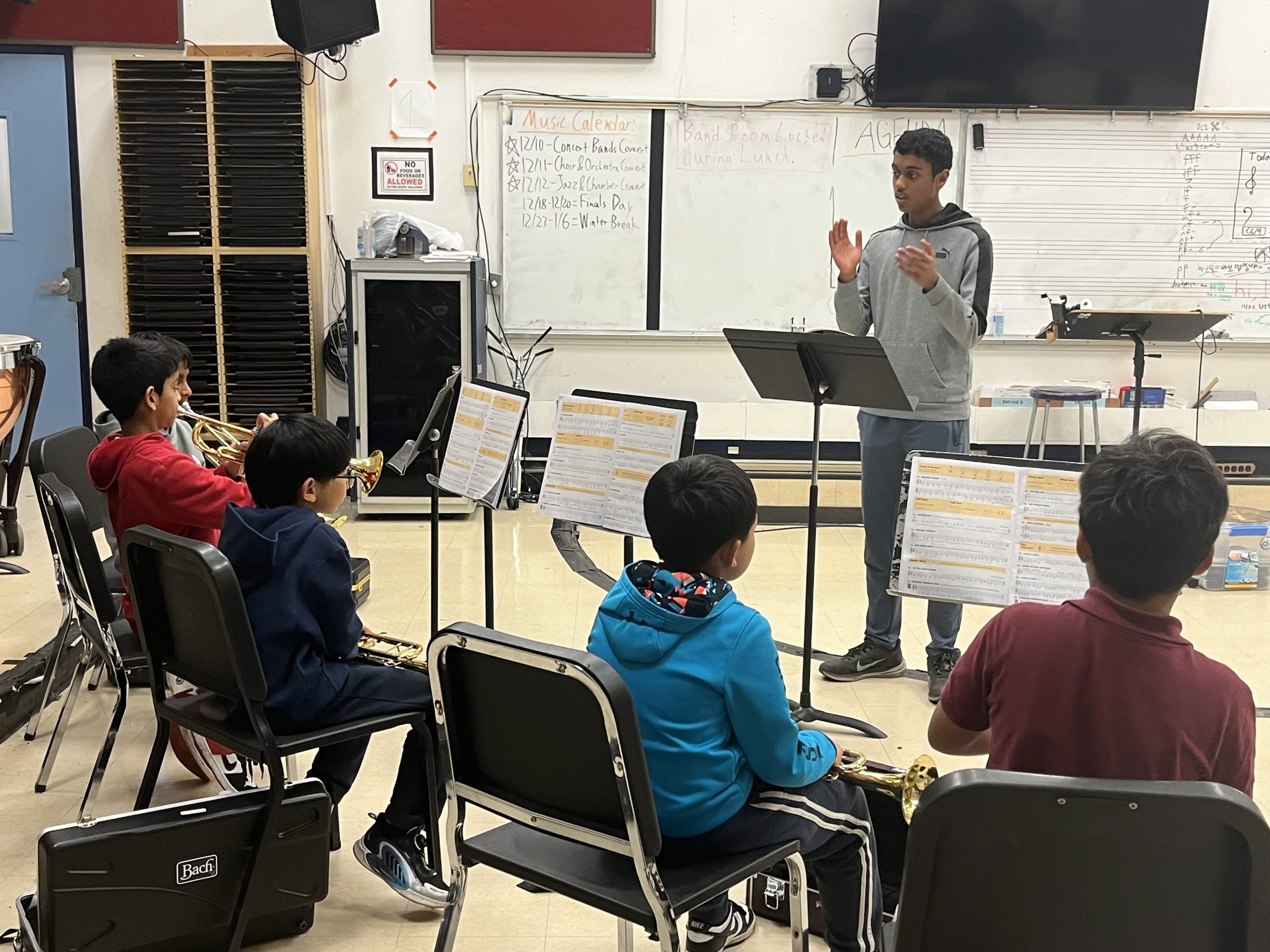The District has relaunched the elementary band and strings programs this school year, with over 700 enrolled students across ten elementary schools, District Music Lead Emily Moore said in a board meeting on Oct. 20, 2024. With only two teachers to teach all 700 students, the music program is stretched thin, Moore said.
The band and strings classes are held twice a day before and after school at each respective campus every weekday, with each school getting one class a week—with the exception of Mattos band— according to the MUSD music program website.
This year, there are only beginner classes, so it brings the question of where next year’s students who have completed the beginner level will go, elementary strings teacher Nicole Poulin said.
“This was the only schedule they (the district) could possibly give us, (which) was before and after school,” she said. “For years, they’ve been telling us they were going to move these classes back into the day like they used to be. So unless they do that, I don’t see how they’re going to get how we’re going to do it. It’s physically impossible to do it.”
Elementary music is provided to 4th-6th grade students, whose ratio for regular, daily classes of students to teachers is 32/33:1, Assistant Superintendent of Human Relations Damon James said in an email.
The elementary music classes consist of around 50-60 kids, which should be closer to 20, Poulin said. The current size of the classes would work for intermediate students, but it is detrimental to the current, elementary beginner students, Poulin added.
“(For) intermediate, you can put more kids in,” Poulin said. “You can do 40 kids in an intermediate class because they have the basic skills; it’s not so much hands on with the (intermediate) kids.”
Proposition 28 money is allocated to the district based on average daily attendance at each school site, then is distributed to school sites for decision making, James said in an email.
Proposition 28, or The Arts and Music in Schools (AMS) Funding Guarantee and Accountability Act, provides funding for expanded arts education programs, according to the California Department of Education’s website. It requires that educational agencies with an enrollment of 500 or more students provide 80% or more of expended funds to be used to employ certificated or classified employees to provide arts education instruction, according to the website.
The high school has also been supporting the elementary program through StemUpAcademics, a tutoring program led by senior Jorel Hernandez and junior Avik Jain. They hold tutoring Mondays at MHS after school for every band instrument for students who need extra support as a result of understaffing, Hernandez said.
“We talked with the elementary band teacher (Kayla Parolini), and we wanted to help out, so we paired with her to help out as much as we could towards this,” Hernandez said.
Hernandez and Jain were also inspired to work with the elementary students because there was no district concert last year, which was due to the absence of the band and strings classes for the elementary students the previous school year, Jain said.
“And these events, like concerts, you get to pair with older kids who are playing harder music,” Jain said. “It’s like that cool feeling. That feeling is what makes them fall in love with band and continue it throughout high school. I think it’s really important that the band program is supported from elementary all the way to high school.”
The Union reached out to numerous people at the District Office for this story. Damon James agreed to an interview but did not consent for the interview to be recorded. Director of Human Relations Kristin Stonehouse and Executive Director of Learning and Innovation Priti Johari cdeclined to be interviewed.
Hiring just two more teachers for the intermediate level for the next school year would give them the same problems and stress the current, beginner level teachers have, Poulin said.
“If they (the district) were to hire, say, four more teachers, that would be helpful,” Poulin said. “At a minimum, that would be very helpful.”
Because of the large classes and the age level of the students, it is hard for the music teachers to give the students the attention they need to learn, Poulin said. The learning environment is much different than a regular classroom since it is constantly loud, active, and requires extensive attention and application from the students, she added.
“I (have) kids that have been faking it since day one and still barely know how to hold their instrument,” Poulin said. “I can’t get to them.”

